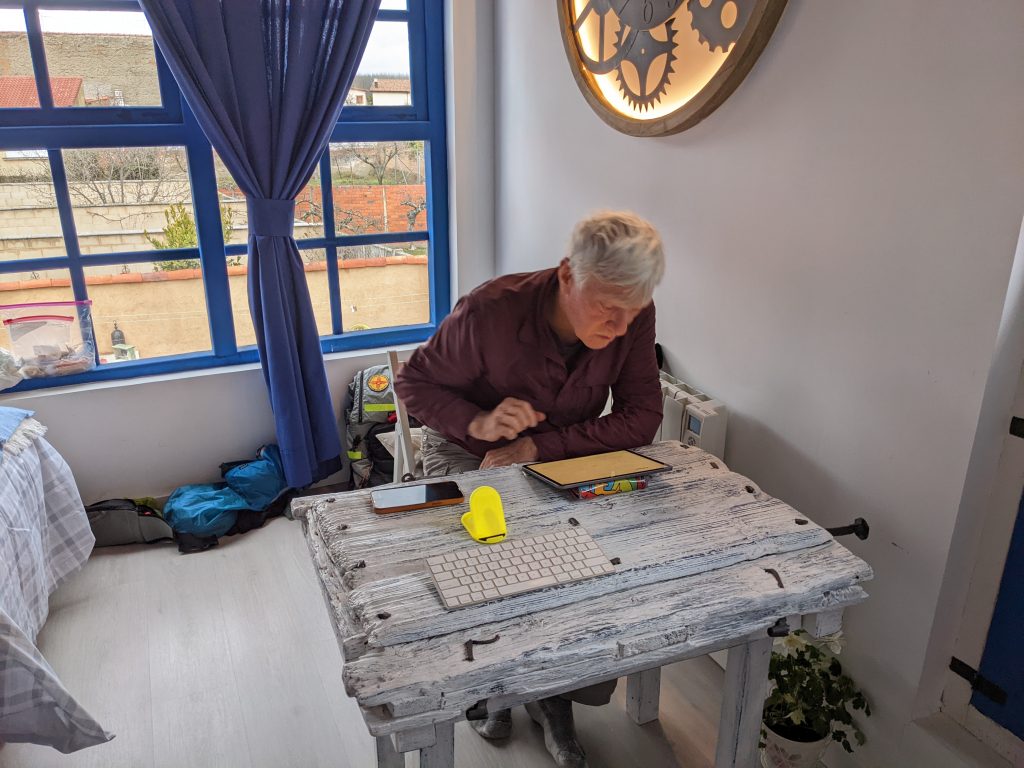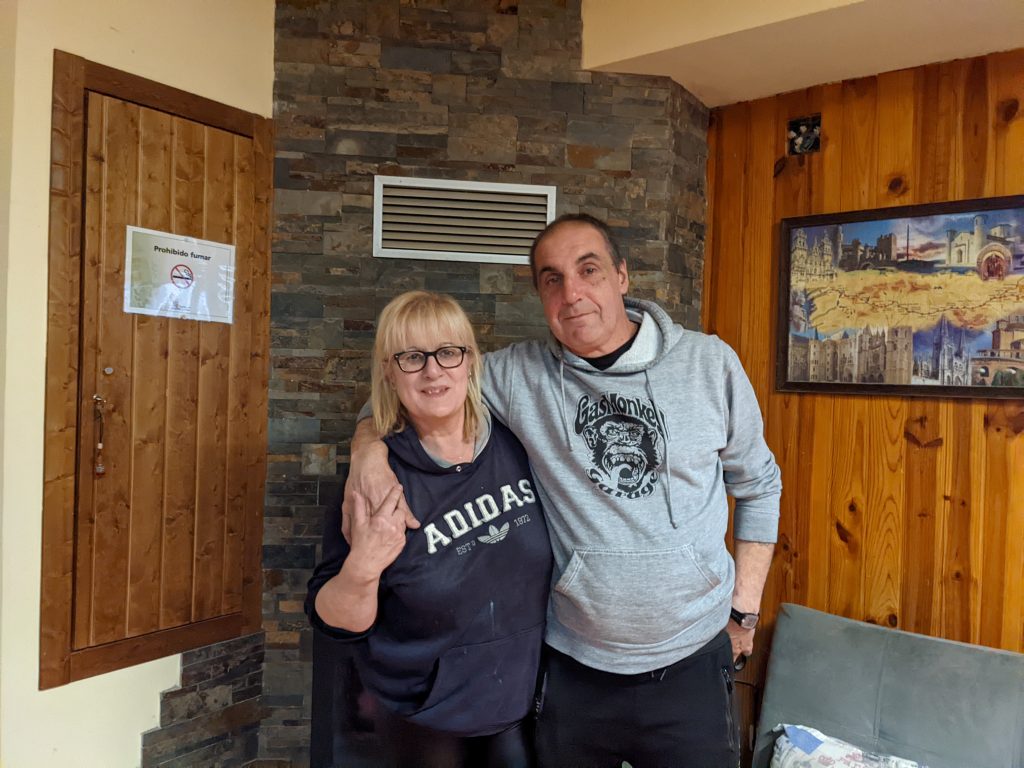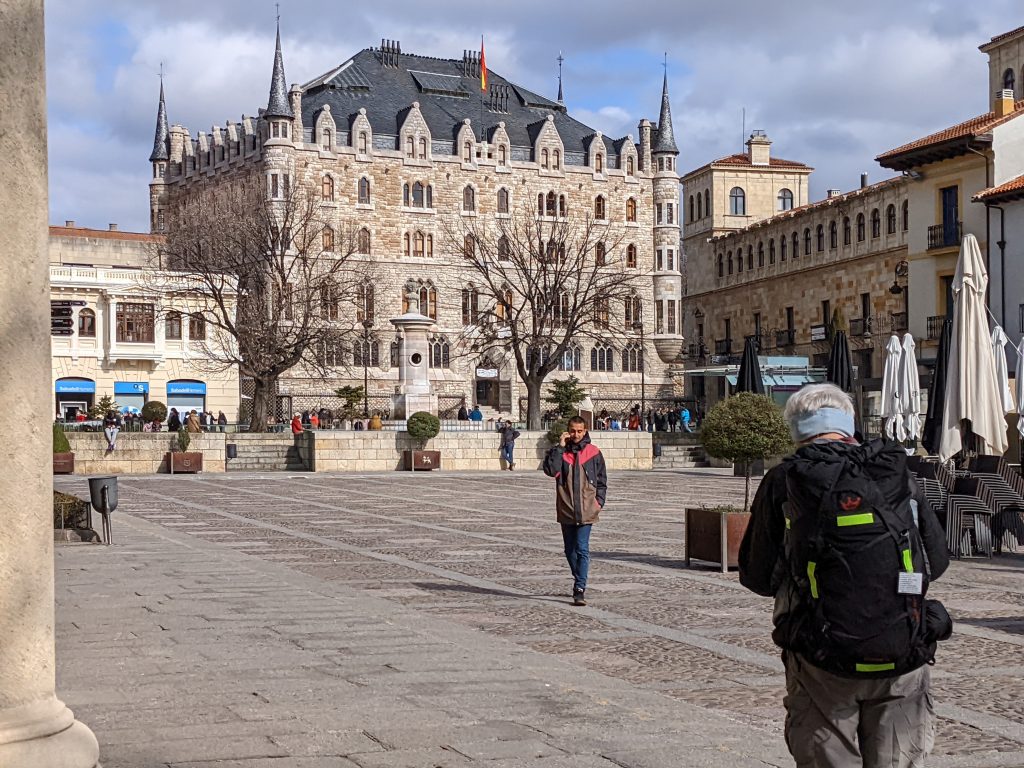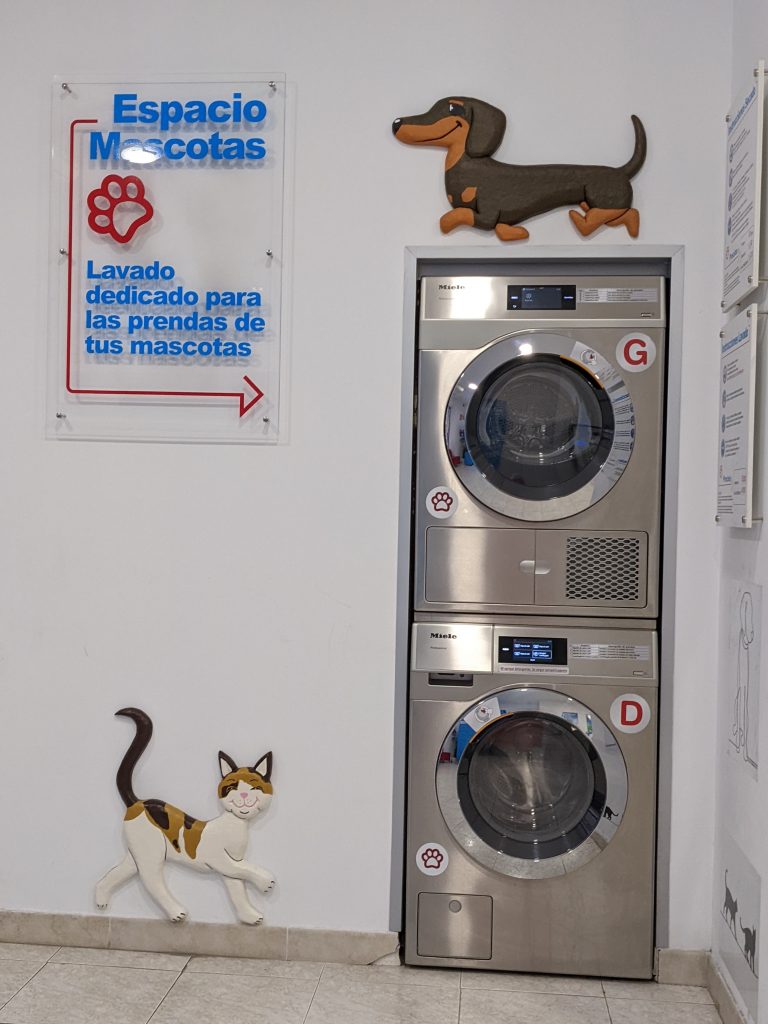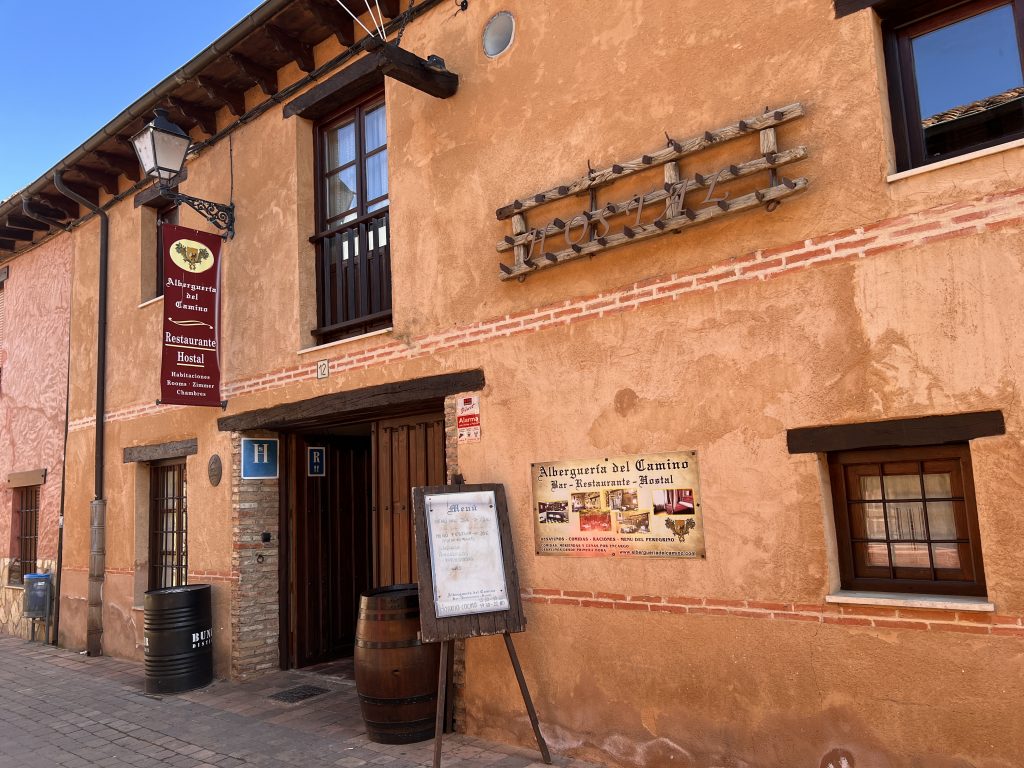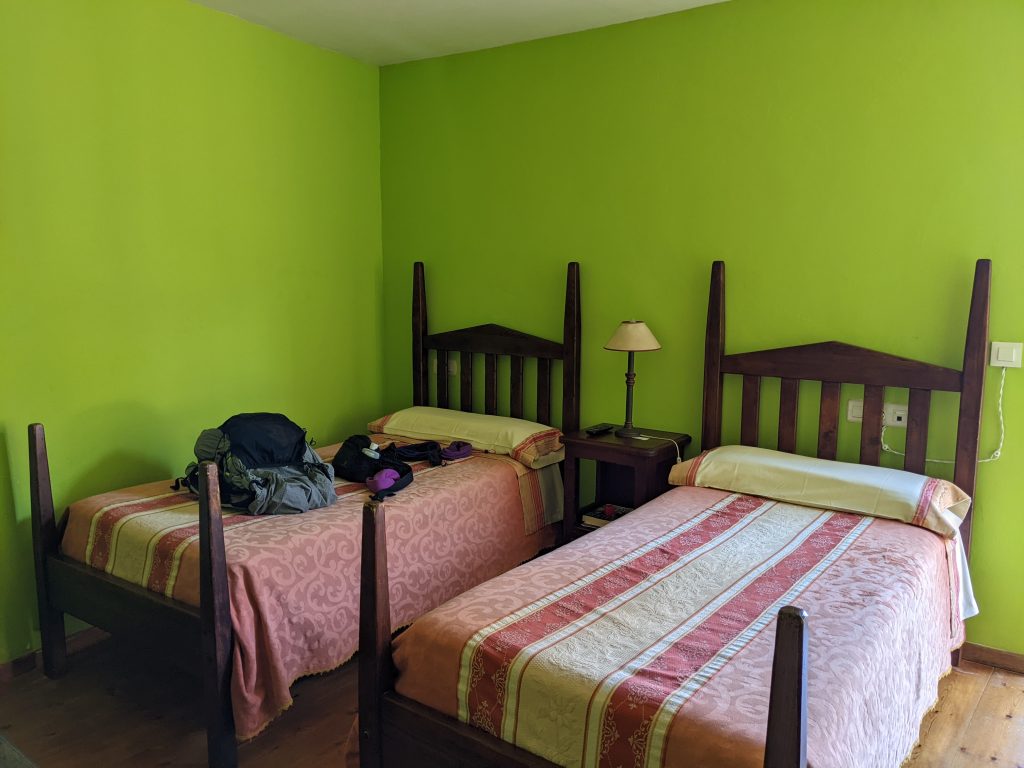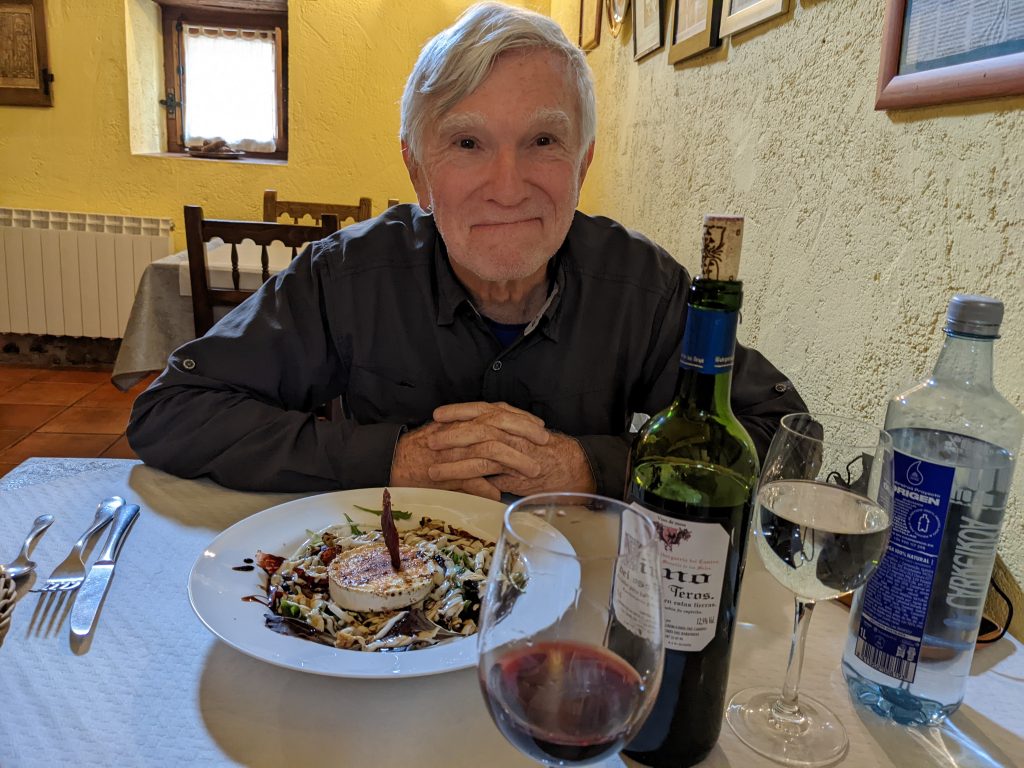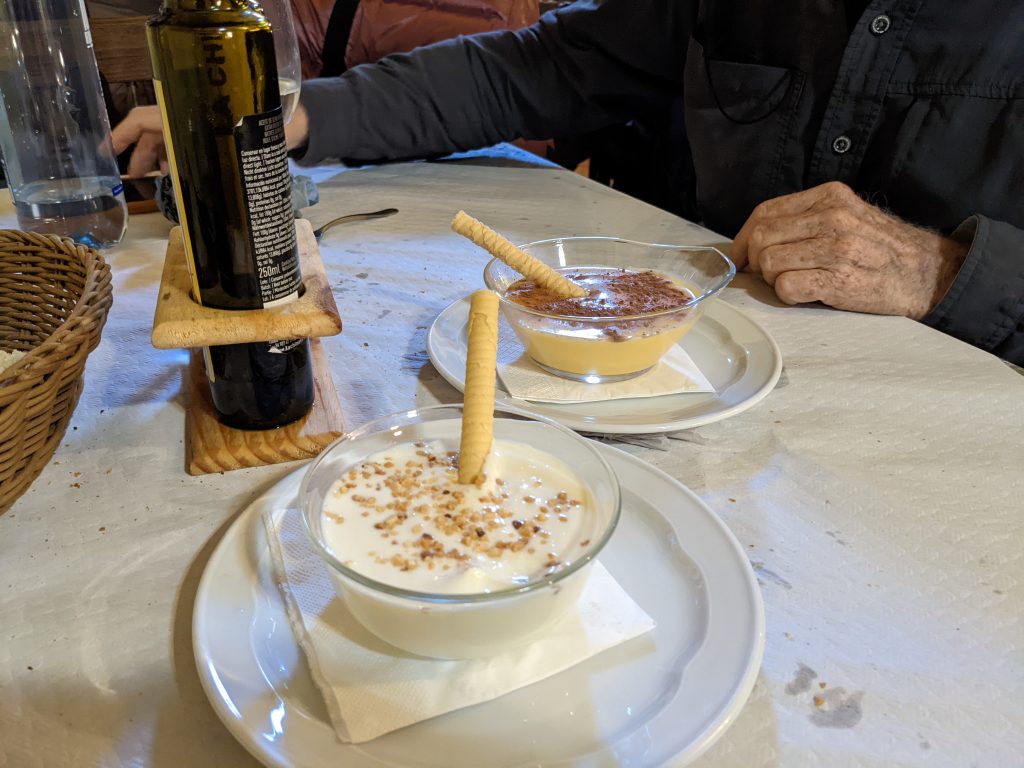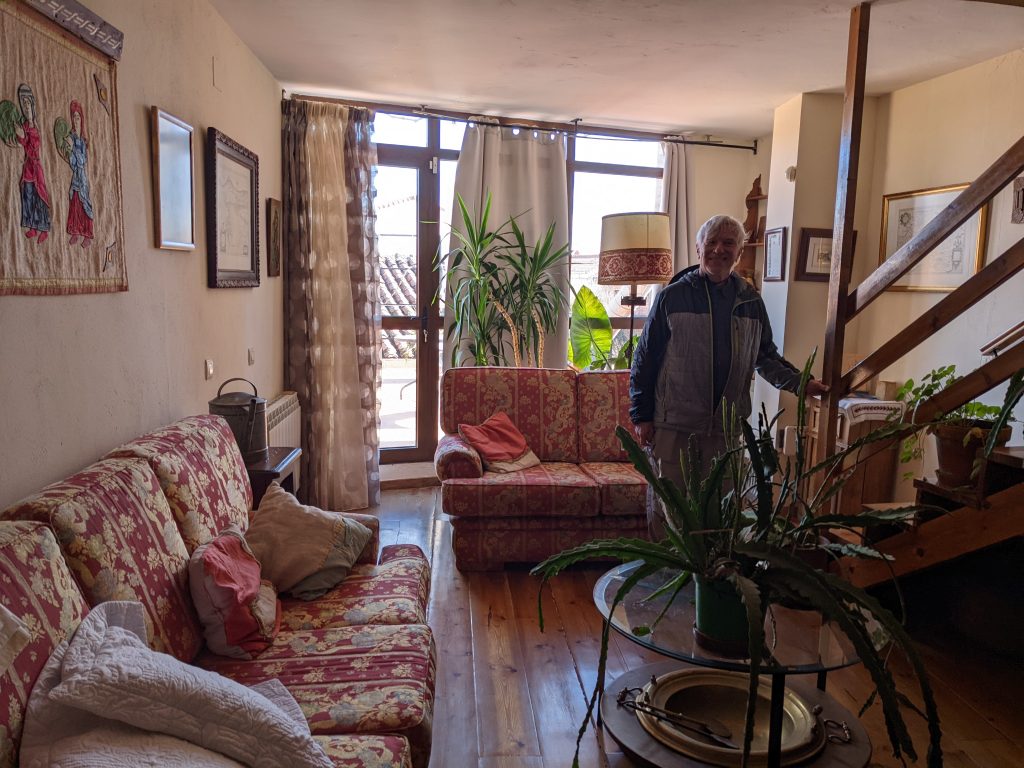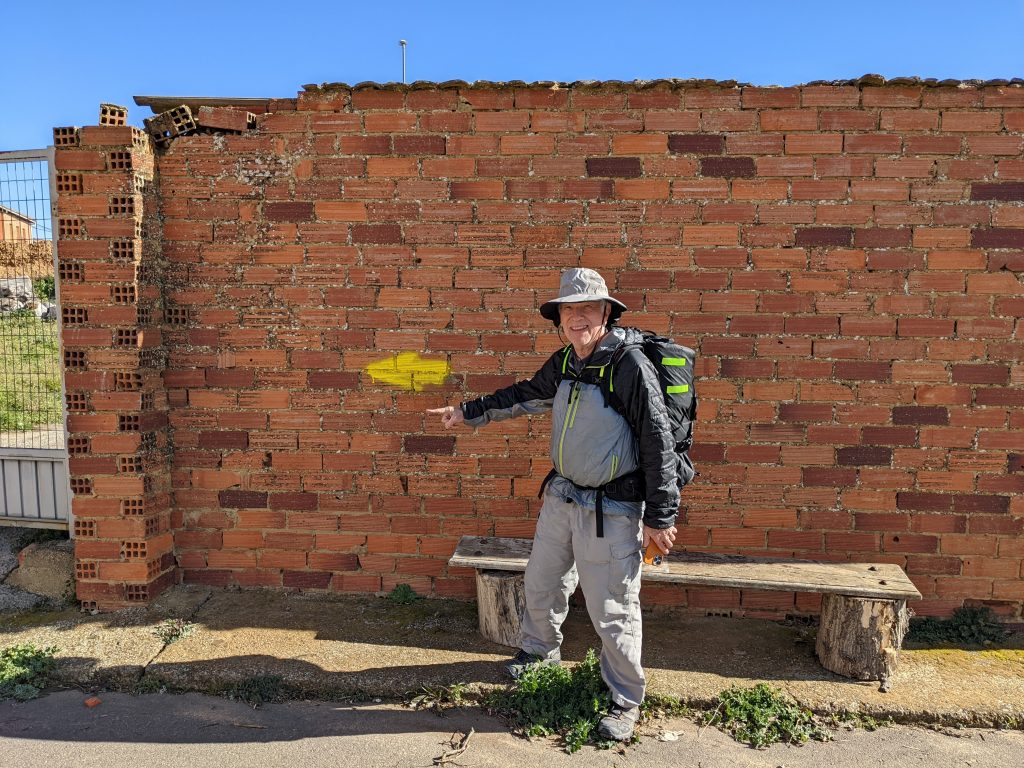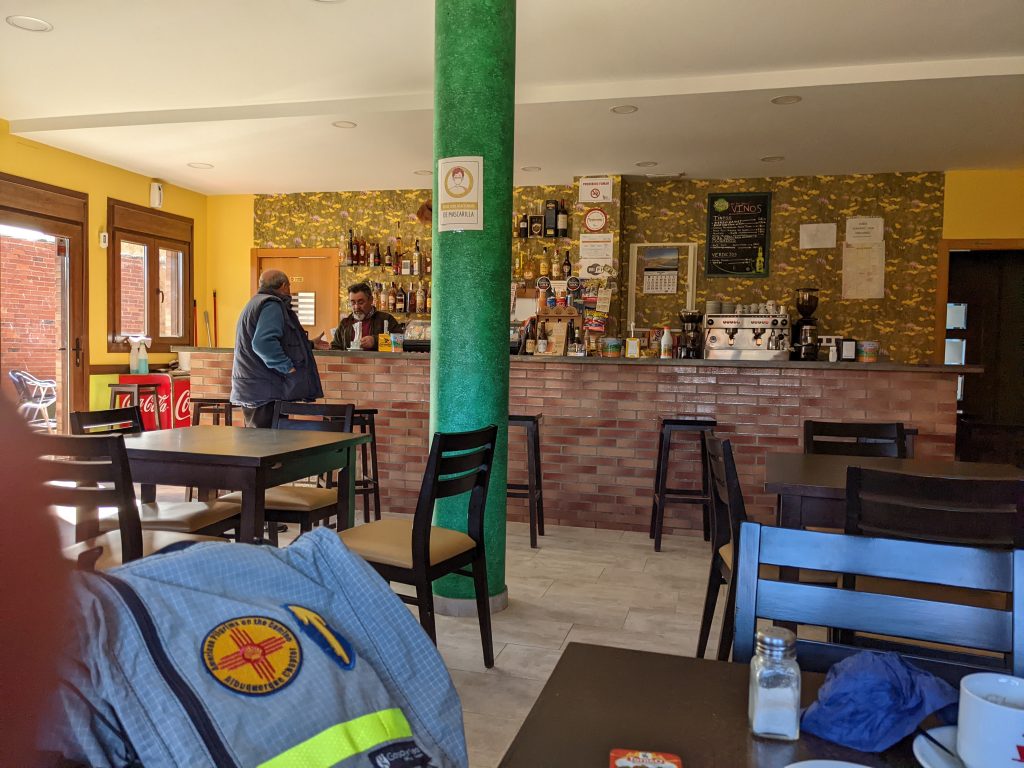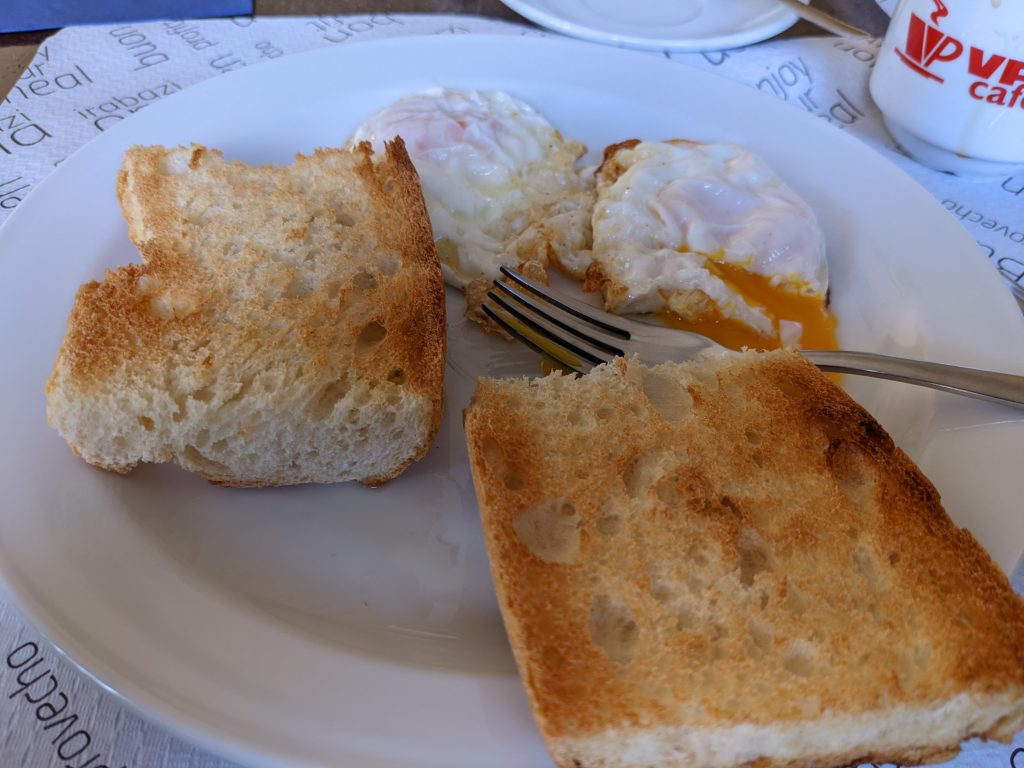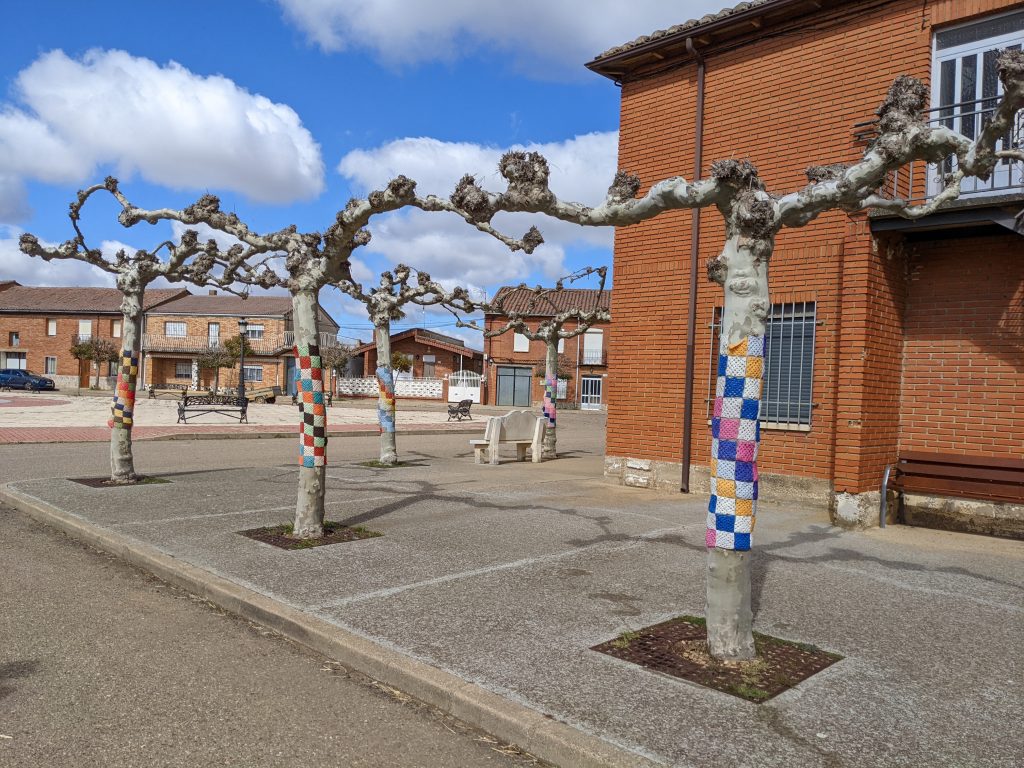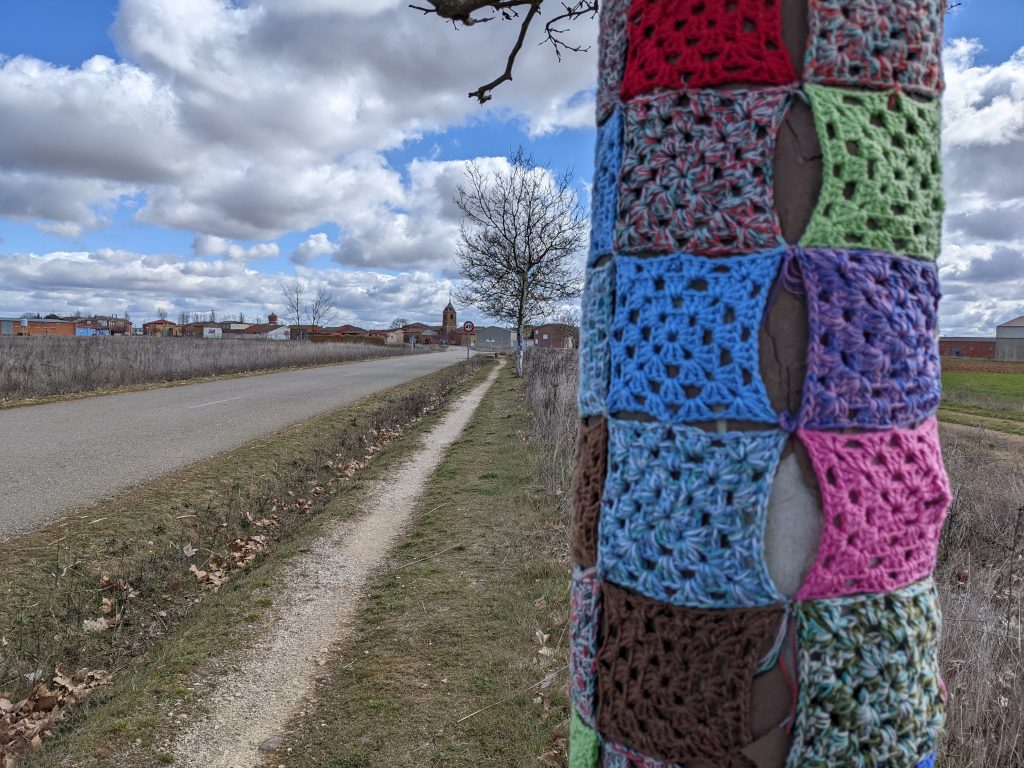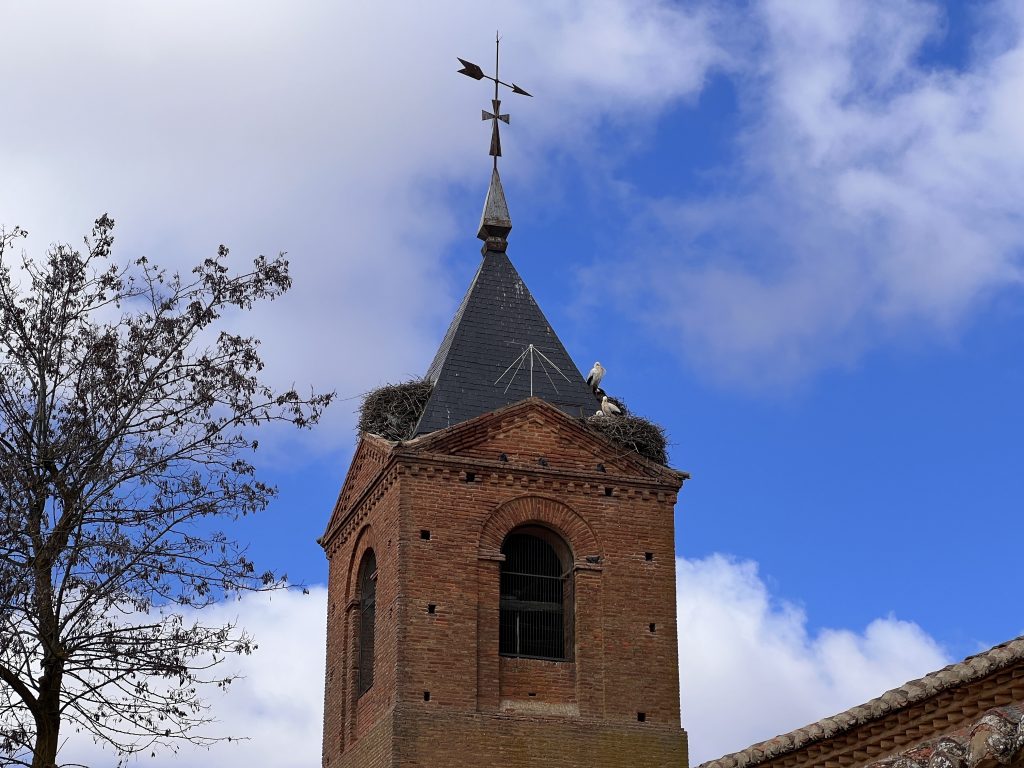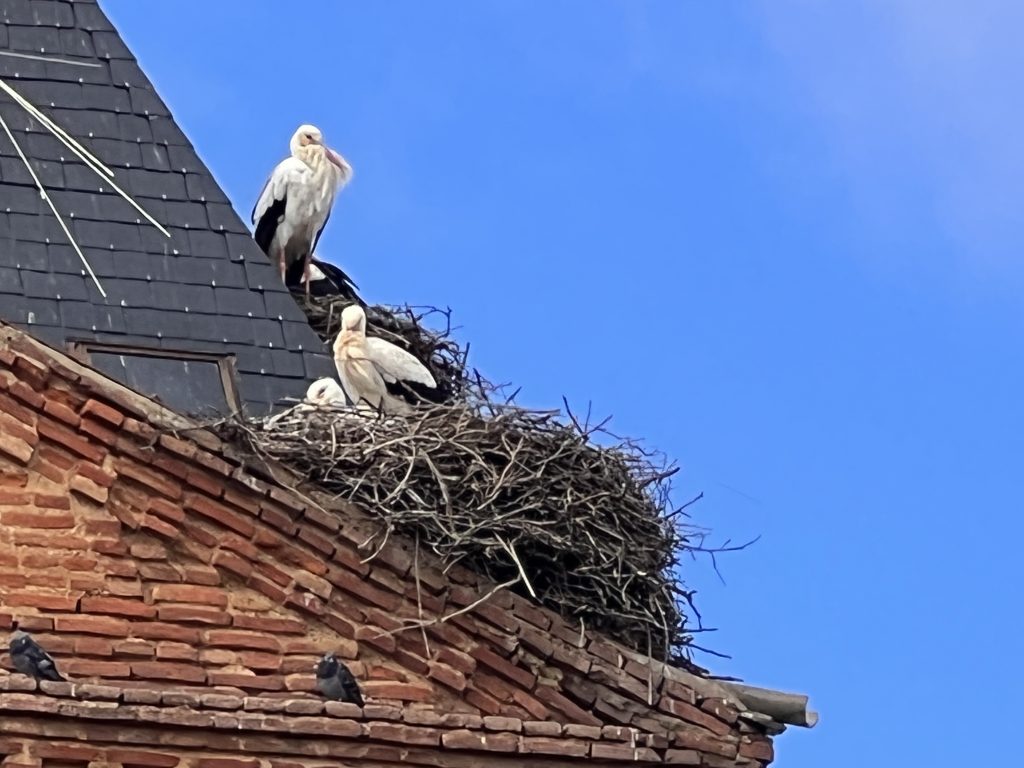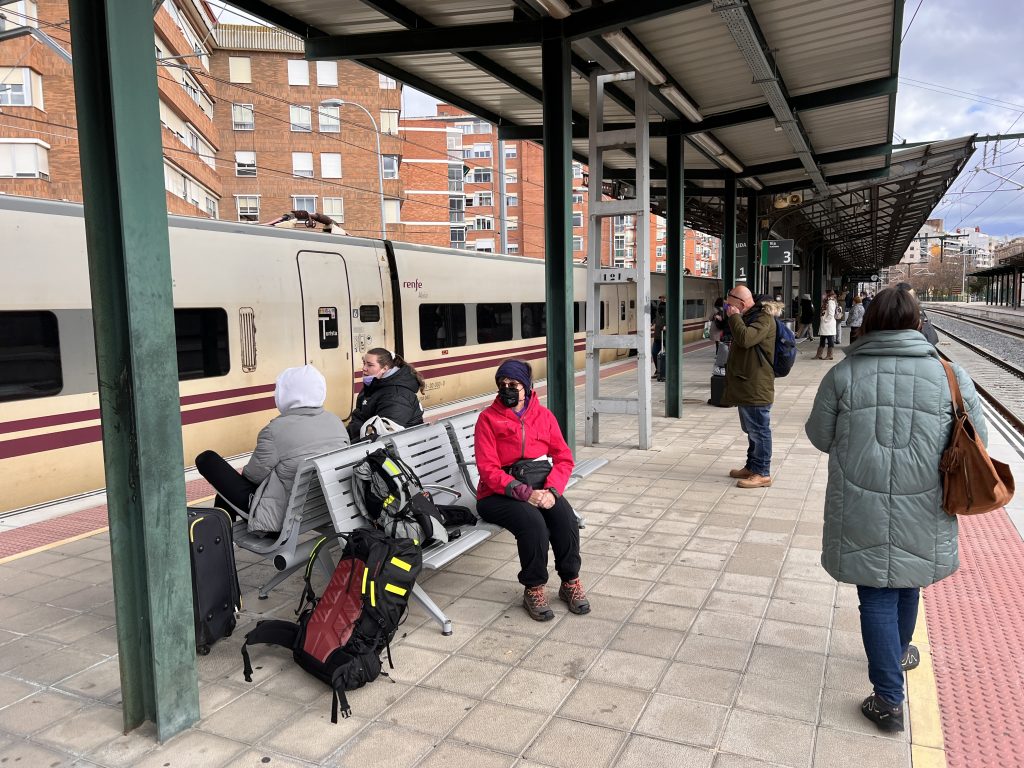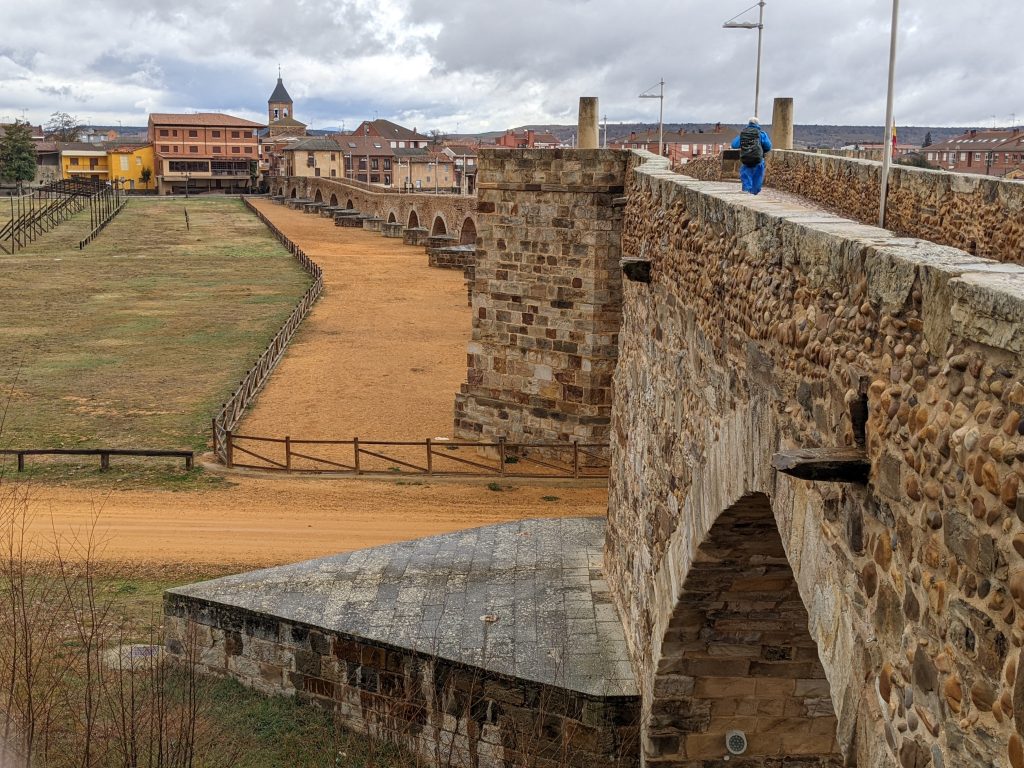
We are in the small town (population a little over 1000) of Hospital de Órbigo. It is one of my favorite places on the Camino. There is a long beautiful bridge leading into the town. I copied this out of wikipedia: “In 1434, the Leonese knight Suero de Quiñones held a tournament in which he or one of his companions challenged all men of equal rank who wished to cross the bridge here to a jousting tournament, Suero holding this bridge in the name of unrequited love. By 1434 the skill of jousting was not a standard part of military training but the challenge was taken seriously. Since 1434 was a Jacobean Holy Year, the traffic upon the Road of St James was considerable. The tournament lasted from July 11 until 9 August and Don Suero claimed to have broken 300 lances by the end.”
The bridge does bring up images of knights and romance.
We loved our private room experience in an albergue last night, mainly because of the nice interaction with the hospitaleros, but one problem is that there was no heat in our room and it suuuure was hard to get out of bed this morning. Close to freezing outside and dark and gray and drizzly. We had booked another private room in an Albergue tonight here in Hospital so we were nervous but, luckily, this room is heated and also it’s charming and sunny (even with gray skies outside). Well, it could be warmer but we are huddled next to the heater sitting at a table blogging (Wynette) and reading our news feeds (Charlie). Not too bad.
We walked 10.3 miles today. It was quite cold and drizzly and breezy (talk about wind chill) . We sure were glad to get here. Not exactly fun walking even though we passed through 2 charming towns and saw lots of storks. We had to walk 6 miles before we got to our first coffee stop. Whew, it was a relief to find them open. EVERYTHING else in that town was closed. Very few bars, etc. open here in Hospital either. But we did find one open bar/restaurant and had an excellent lunch. Charlie suggested while we were eating that, so far, we’ve been having better food on this Camino than ever and I think he’s right. I guess possibly it helps that we look at our phone for places that get the best Google reviews and choose one of those places. But we didn’t have many choices for lunch in Hospital today.
We’ve been eating a late lunch (around 3:00) and not eating dinner. They give you so much to eat we wouldn’t have room for dinner. The things we chose from today’s pilgrims menu (10 euros) : Charlie: trout soup, ham with red peppers, cheese cake. Wynette: mixed salad, garbanzo bean/shrimp soup, cheese cake. We share everything actually. Everything was incredible. Especially the two soups. We couldn’t believe how good they were. I can’t imagine how they manage to make them so flavorful. The woman who served us was also the cook. (I asked her if she was the cook and she said yes.) We found the same with the incredible lunch we had yesterday in a little bar in Villar de Mazarife. Both women were young. Man these Spanish women know how to cook. They proudly tell us things are “casera”, or “homemade” and there’s no question that that is true.
